We’re in the midst of a very fun design era. In short, anything goes! Matching is no longer a necessity. Clashing patterns, colors, and materials are being celebrated by designers across social media and the interior design industry alike.
The vast diversity among tile options on the current market may have a lot to do with that. Not only do we have more styles, patterns and color options than we’ve ever seen, new technologies are now allowing manufacturers to mimic the look of lots of other materials like wood and natural stone. This has created a virtually endless amount of new possibilities.
Unsurprisingly it has also raised a few questions, not the least of which, asks: Is there a difference between “bathroom” and “kitchen” tiles? There was a time in history where people never would have thought to use the two interchangeably. But this isn’t your grandma’s tile.
The answer is no.

Other than the style, there is no difference between ceramic “bathroom” and ceramic “kitchen” tile or porcelain “bathroom” and porcelain “kitchen” tile. One is just as waterproof, stain-resistant, and durable as the other.
Through much of our recent history, bathrooms and kitchens were designed with a particular aesthetic in mind. Stores often separated their “bathroom” and “kitchen” tiles by style according to those aesthetics.
It also made it much easier to envision the separate spaces in which those particular tiles would be used. We’re much less prone to such think in such disconnected terms these days. With the increasing popularity of open-concept homes with fewer walls separating spaces, it makes a lot more sense to curate a single design scheme that reaches all corners of the home.
That being said, you may be tempted to think that any type of tile is suitable for both kitchens and bathrooms, walls or floors. That is where you’d be mistaken. Kitchens and bathrooms have vastly different uses and levels of foot traffic and moisture. This leads to different needs and different solutions.
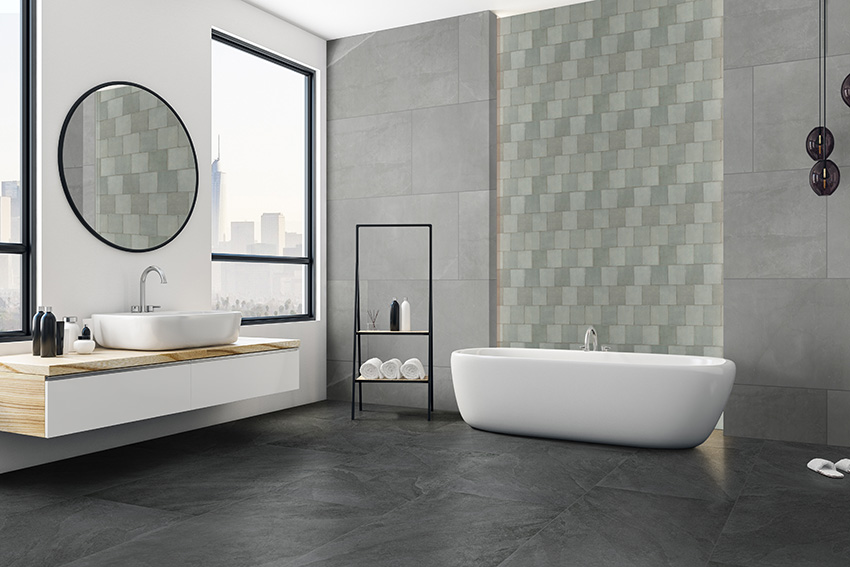
In the Kitchen
Kitchens are often the busiest location in the house—especially if your kitchen is an active entertaining space. If your kitchen truly is the heart of your home, floor tiles designed for heavy traffic are a necessity. Ceramic tiles are often used in high-traffic areas, but natural stones and even porcelain tile can also work if the product rating indicates they are suitable for high traffic spaces.
Another place tiles are utilized in kitchens are the walls and backsplash. For these situations your main concern is messes. Choose a tile that doesn’t stain and is easily cleaned.
Ceramic tile is the most popular option for kitchen backsplash due to their incredible versatility. They come in many shapes, sizes and colors and can be installed in countless patterns.
Tile backsplashes are also often made of porcelain and glass which are some of the easiest to clean. All it takes to clean these tiles are some non-abrasive cleaners and a soft rag. These tiles are also durable, water-resistant, and come in a variety of styles.
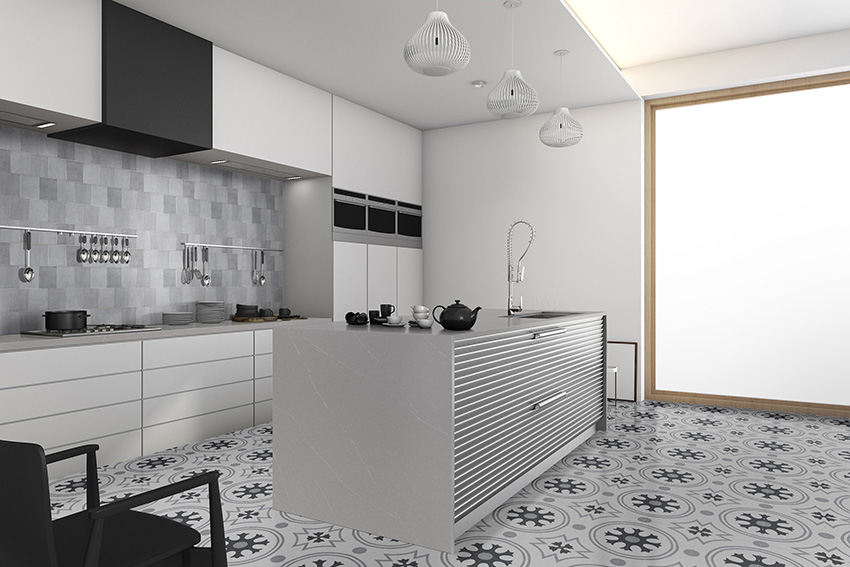
In the Bathroom
In the bathroom there are two important requirements that your tile choices need to meet: they’re not slippery and they’re not absorbent. Bathrooms are very humid and wet spaces, so it is important to choose a tile that will prevent accidents and also won’t breed mildew. Look for tiles with a good rating for being non-slippery and non-absorbent. Ceramic, porcelain, and natural stone are all great choices in the bathroom.
Mosaic tiles are hugely popular in bathrooms. They can be made of a number of different materials, including ceramic, marble and glass. The tiny tiles can be pieced together to create beautiful patterns and designs in a wide variety of colors.
Whether you choose a mosaic for your bathroom floor, a statement wall, or to create a unique look throughout the whole room, mosaic tiles are a great way to feature your own personality in your space.
On the walls and on the backsplash, you don’t have to worry about slipping, but you do need to pay attention to moisture absorbance, so look for a tile with a low level of porosity.
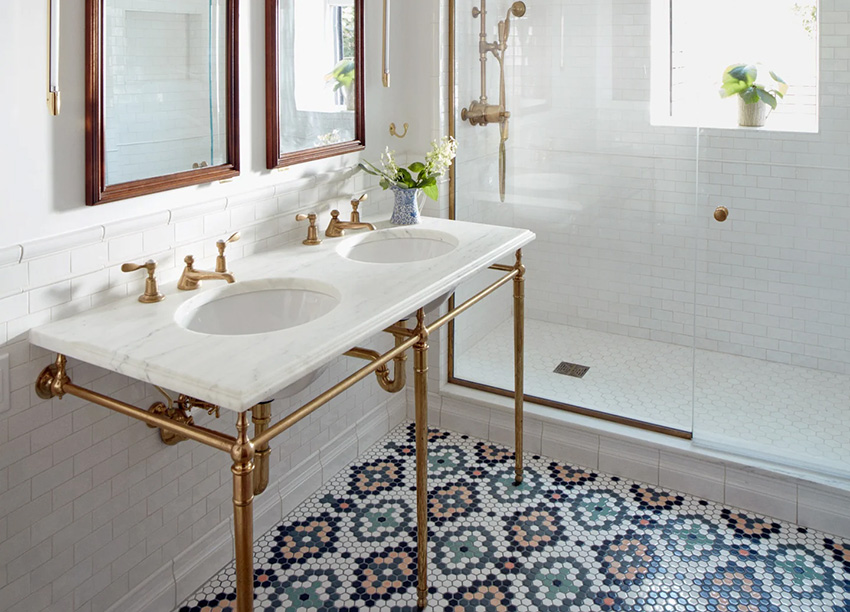



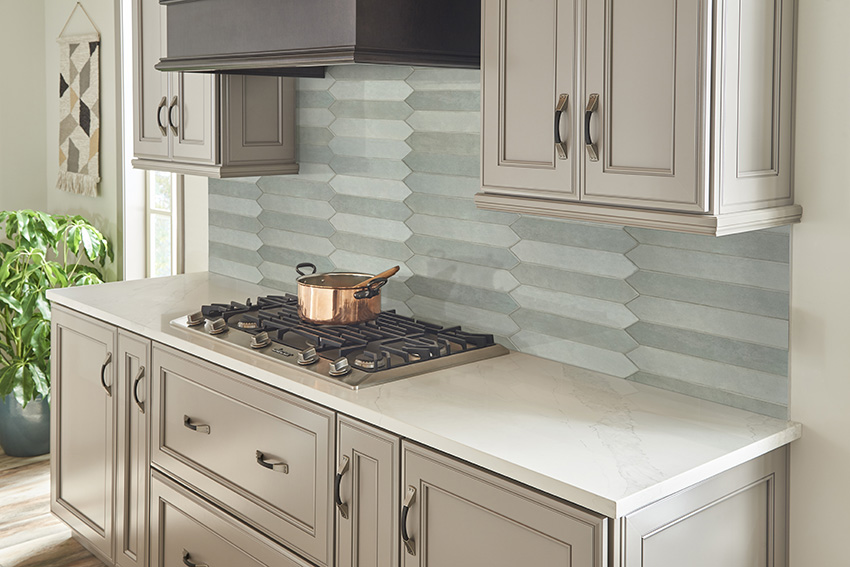
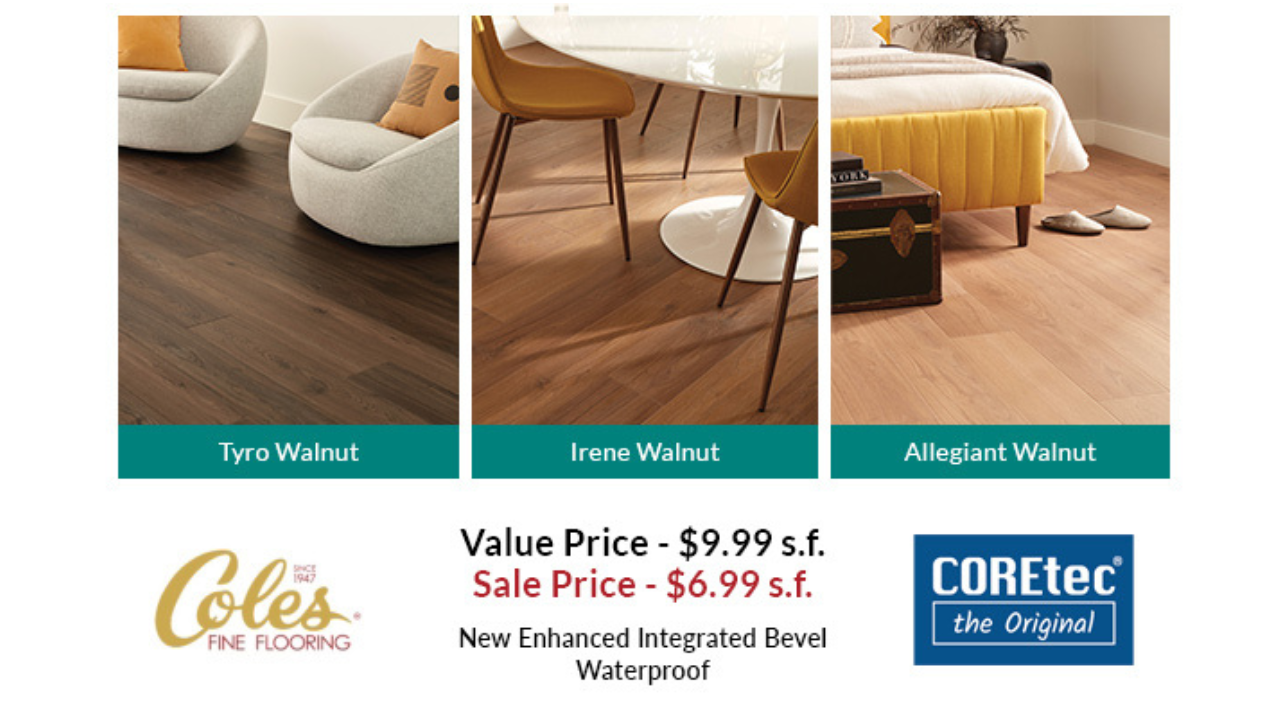

 Prelude Version 2.1
Prelude Version 2.1